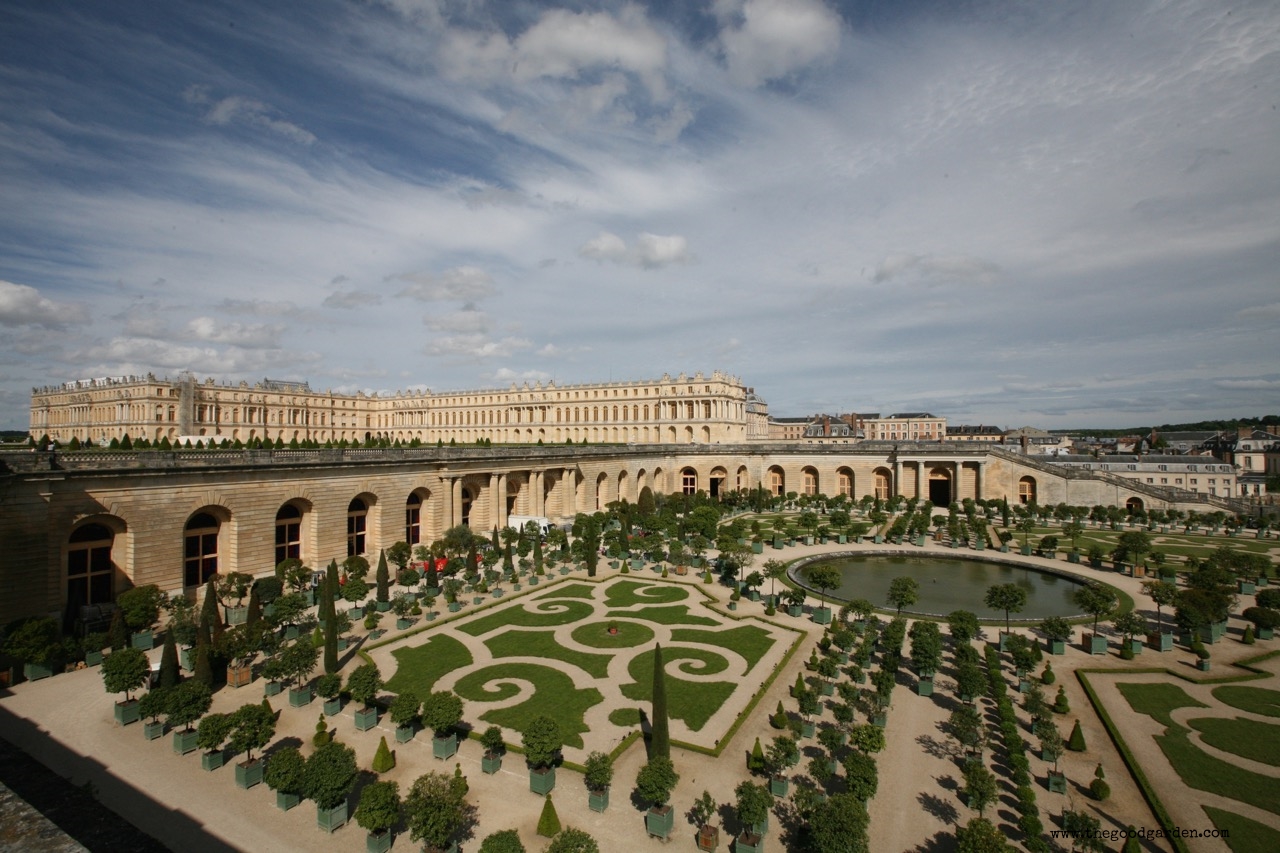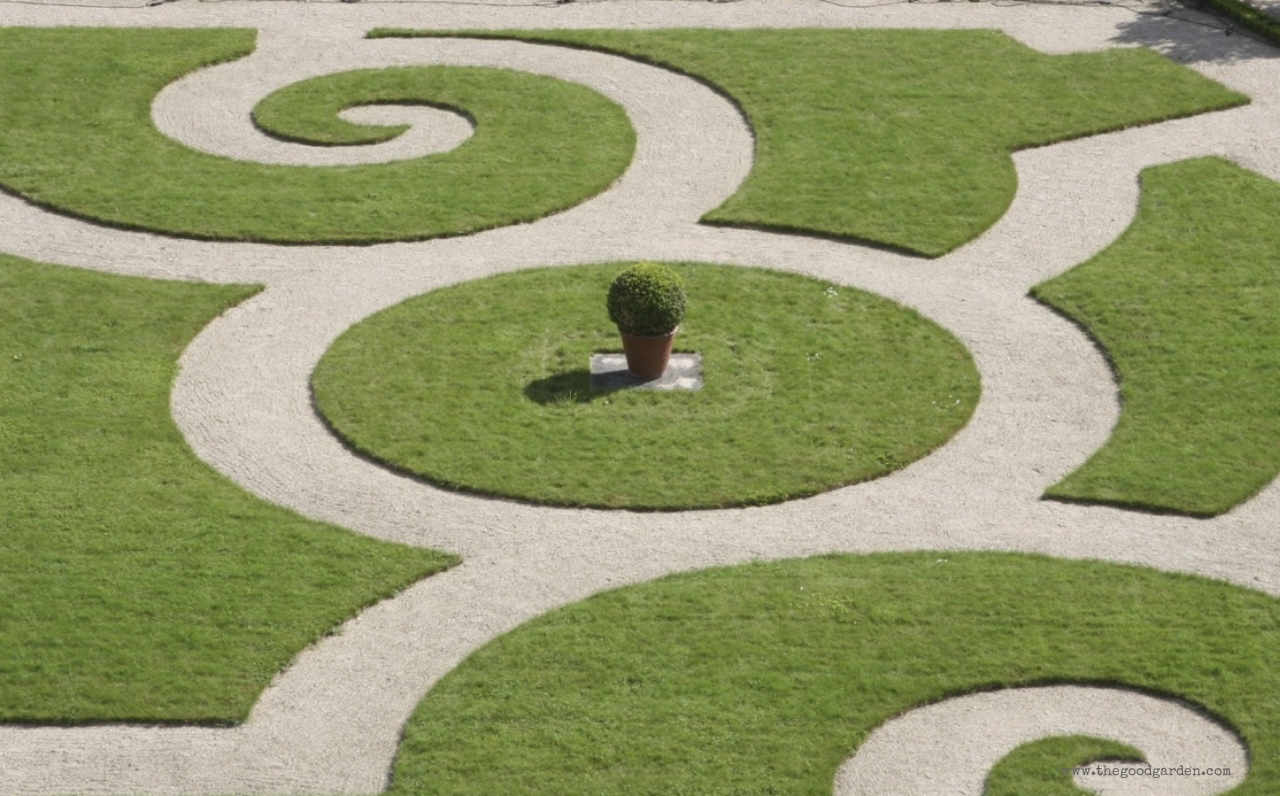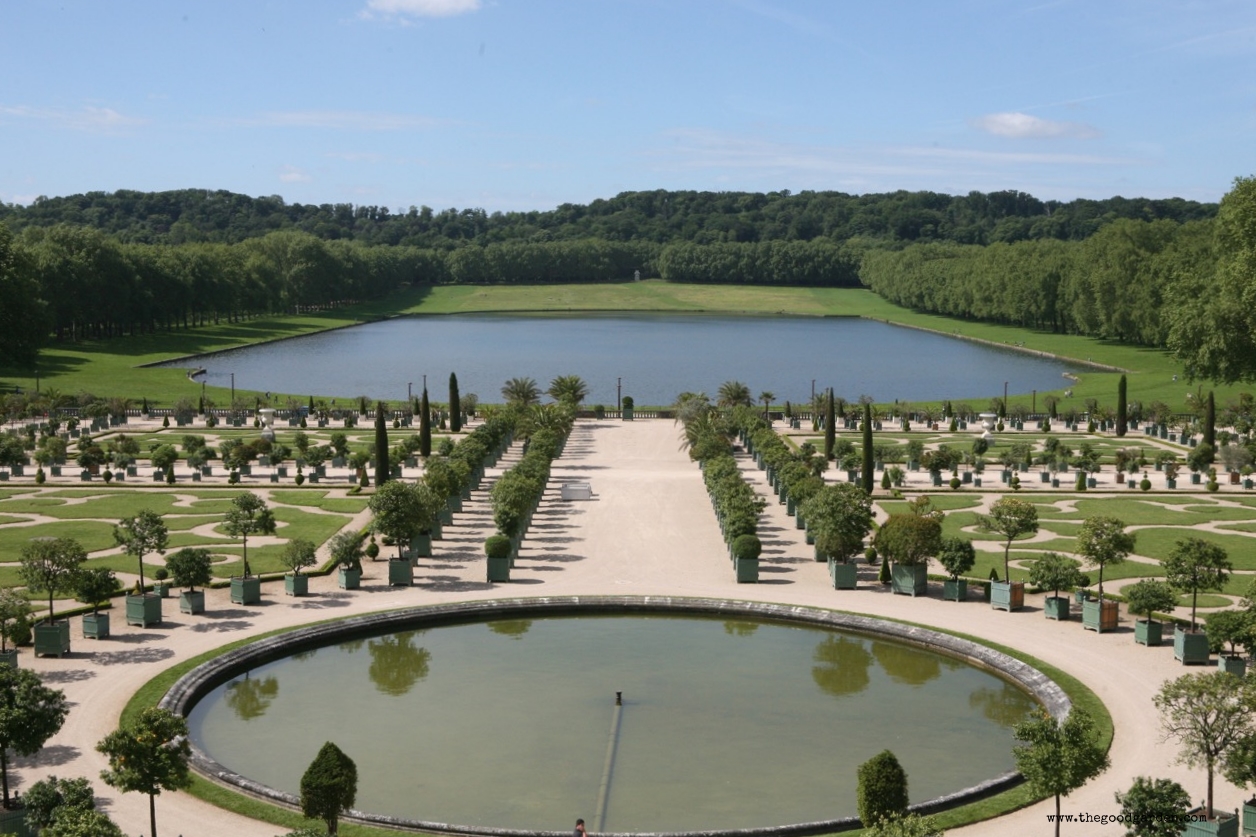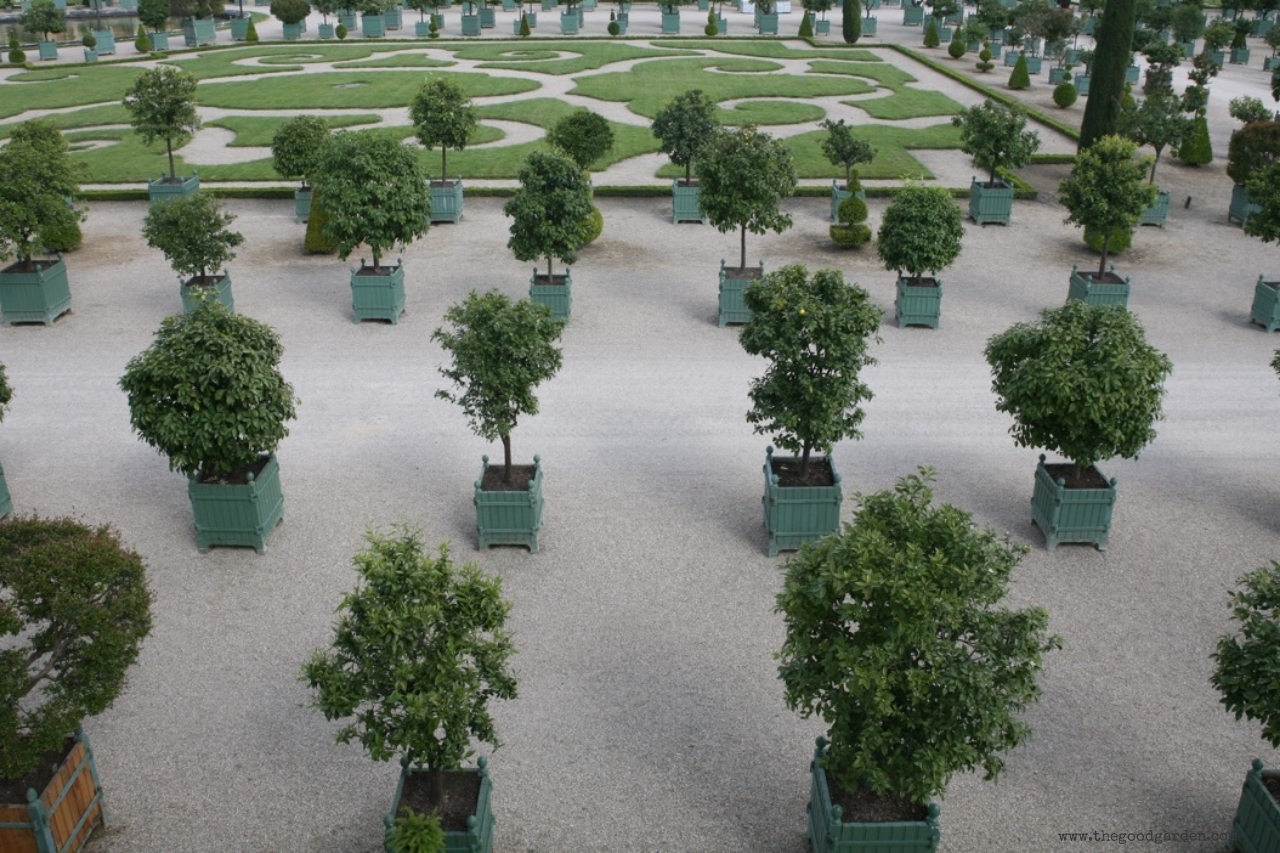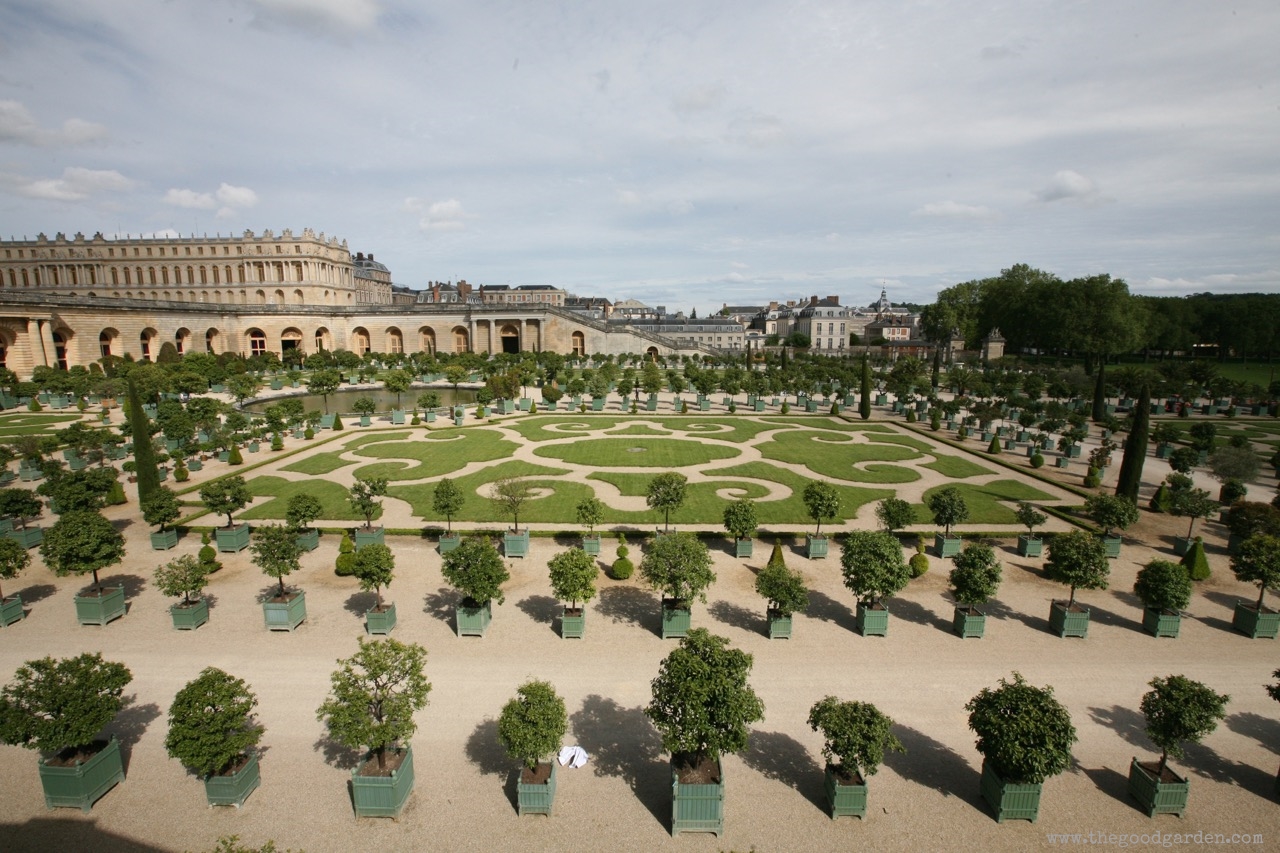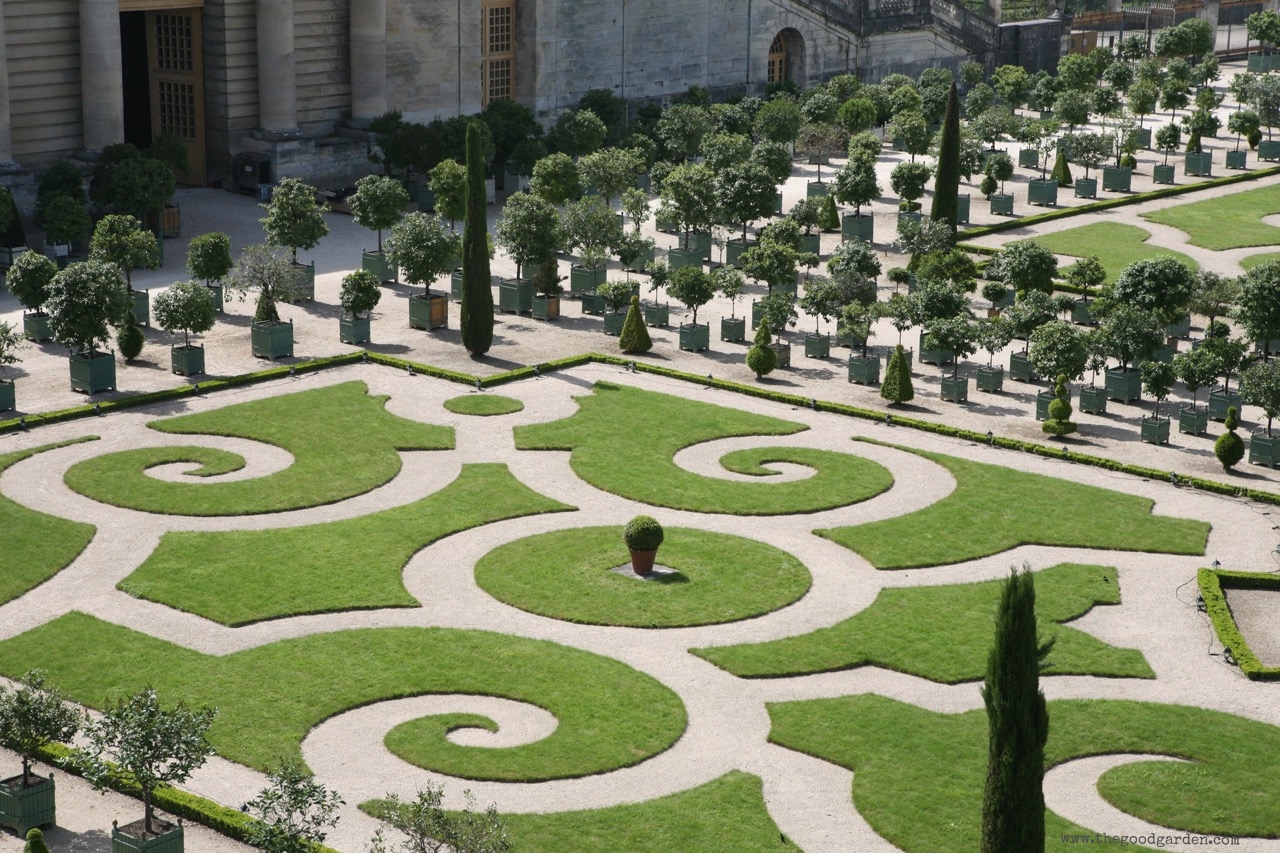Versailles, the famous palace and town west of Paris, became the seat of the French government in 1682 and remained so for over 100 years. The name conjures images of luxury, magnificence, and excess. In the 1970’s, it was even used to name the Lincoln Versailles, a re-badged Ford Granada. (Granada also the name of a town with a famous garden.) But I digress…
In the garden at the Palace of Versailles, one of the iconic sections is the Orangerie. Built by architect Jules Hardouin-Mansart in the 1680’s, it epitomizes the French formal style with geometry, symmetry, control, and perspective. This garden includes six sections of grass arranged around an oval pool, and a crushed stone walk that lines up with the formal Swiss Lake, all conveniently meant to be taken in from the roof terrace of the Orangerie.
Over 1,000 orange, lemon, and pomegranate trees, many reported to be over 200 years old, flourish in quintessential painted wood and metal boxes called Versailles planters. Still made by hand in France using traditional techniques, a mid-sized planter weighs 400 pounds and will set you back thousands of dollars. It’s like an Hermes bag for your plant! Said to last 150 years, the craftsmanship visible in these planters make them worth it. Nonetheless, with 1,000 planters, this garden has millions tied up in garden pots.
The potted trees spend their summers outside, and their winters tucked safely inside the Orangerie where they are protected by tall windows. I reached this garden from the Queen’s Grove by climbing up through the Hundred Steps Gate. Though the garden did not pull me in the way more intimate gardens do, I found myself observing this structured garden for some time. Meant to be viewed from above, the central walk lines up perfectly with the Swan Lake which visually points to the horizon where the landscape becomes more natural. The perfect spiraling designs in the lawn beg to traced. The symmetry and repetition give it a special rhythm. And the trees, each unique yet also similar in their identical blue-green boxes, are arranged as if they were soldiers in uniform, all standing an arms-length apart.
Click here for more posts about the Versailles and the French formal garden style.


